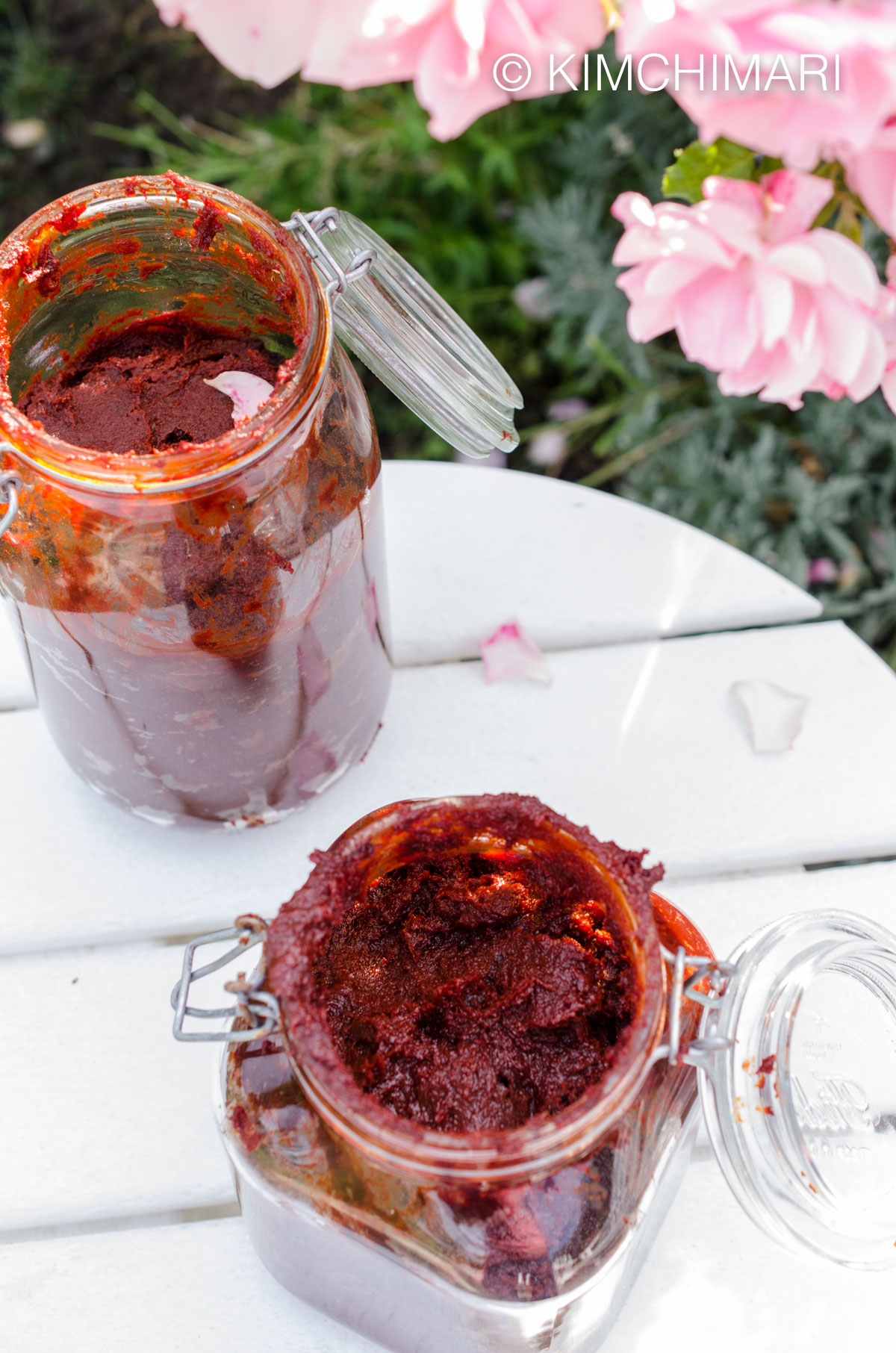
Is my Homeade Gochujang fully fermented?
Q: How do I know if my homemade gochujang is fully fermented?
Your gochujang continues to ferment either outside or in the fridge. It just ferments at a much slower pace inside your fridge. Gochujang often (not always) loses it’s peak flavor as it ages though, unlike Ganjang (soy sauce) where it continues to mature and deepen in flavor.
Under perfect conditions, your gochujang should be ready in 6 months or so. But if there isn’t enough moisture in your gochujang, you may need to bring it in and store in the fridge sooner. If the top keeps cracking and it’s getting really dense (too dense for you to easily turn with a spatula) then it’s too dry. The first year I made gochujang in California, I had to put it in the fridge only after 3 months because it became too dry.
This year, I had a little too much moisture so I let it stay a bit longer. Not only for the consistency but somehow the flavor wasn’t fully developed at month 6. So I let it stay longer outside for 2 more months and it was now perfect!
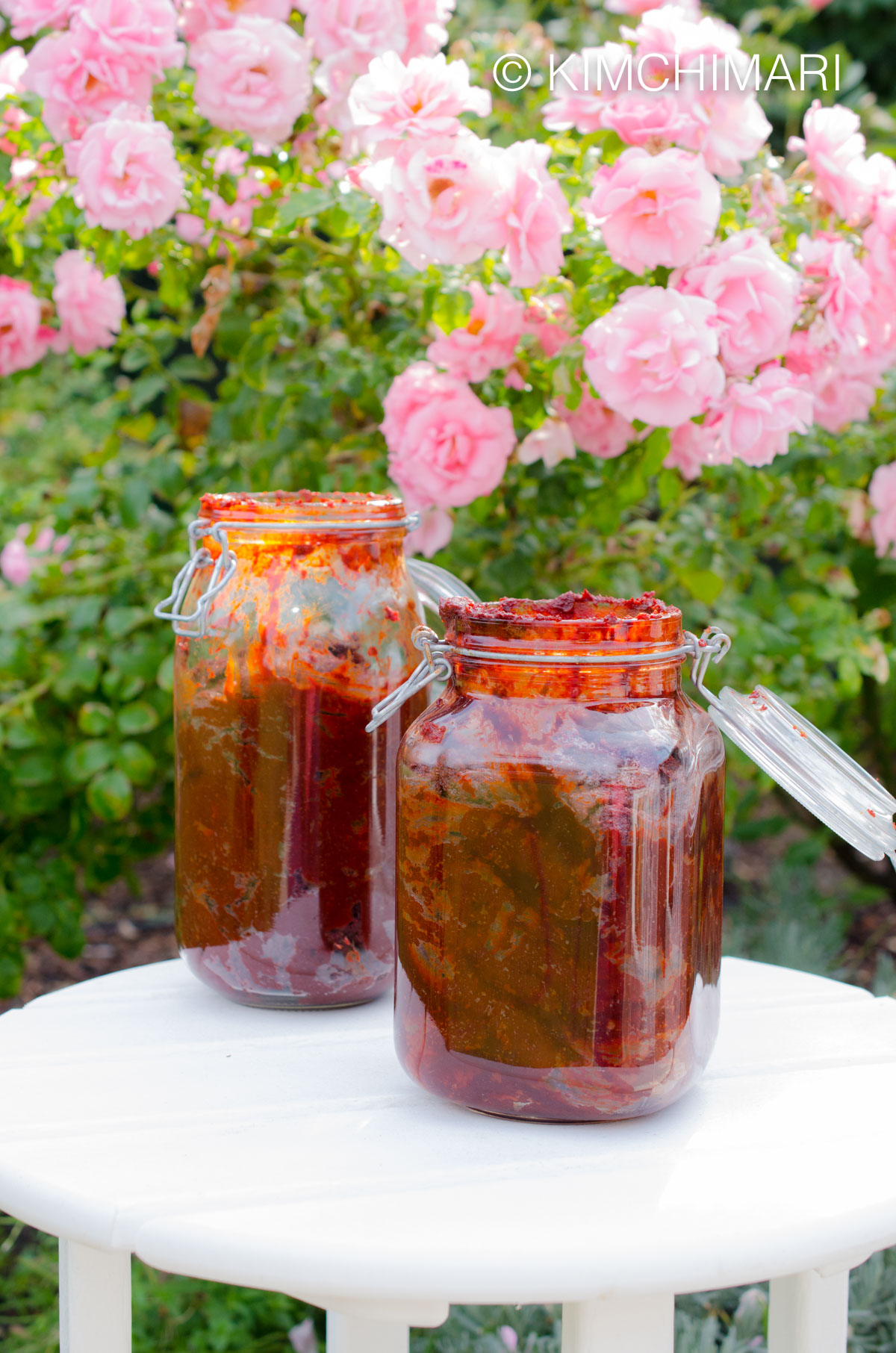
A: Best way to tell if your gochujang is ready is by tasting it.
Taste your gochujang in the beginning and you will taste the raw spiciness of the pepper powder, meju powder and rice syrup all separately. It still tastes OK but none of the deep complex flavor that fermentation brings is there yet. Try tasting gochujang every month or so and see how the taste changes over time. When it is ready, you will taste a wonderful symphony of flavors – spicy, salty, sweet and umami flavor that no words can describe. As my husband puts it, the flavor reaches deep down into your stomach. Many Koreans will express it as “속이 뻥 뚤리는 맛” which means that the taste is so deep, clearing and so far reaching that it feels like it clears your inside all the way.
Anyway, I transferred all the gochujang out of my clay jar (hangari) into these glass jars to keep inside. I also gave away couple jars including one to my friend’s 86 years mother.
“Receiving this jar of JinJoo’s homemade gochujang is better than receiving $20,000!!” is what my friend’s 86 year old mother said when she received this jar of home made gochujang recently. Wow.. I was speechless…I was so grateful and happy to hear that. I’m sure she appreciates, more than anything, all the time and love that goes into making gochujang. And at her age, I am sure she remembers how wonderful real gochujang taste is.
I wish there was a way I could let you all taste how wonderful homemade gochujang is…maybe.. hmm.. should I do a Gochujang Giveaway?? HAHAHA…Not sure if that’s allowed legally 😝..will have to look into it.
Anyway, in case you want to make your own gochujang at home, here are two recipes below.
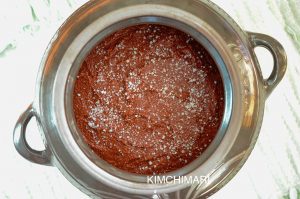

OH and I will be sending out my first newsletter this week. If you are an email subscriber, you will be getting it. If you are a wordpress follower, I am afraid, you won’t be getting my newsletters unless you sign up separately via email. Sorry for the added work but I have not yet found a way to transfer wordpress users to my mail service. If any of you know, please let me know!
Thank you and have a good weekend everyone!
XOXO ❤️,
JinJoo


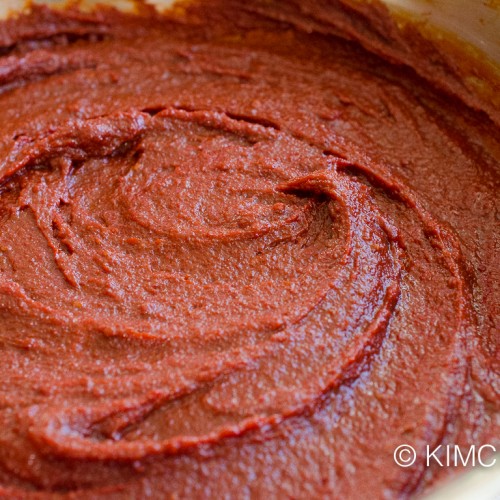
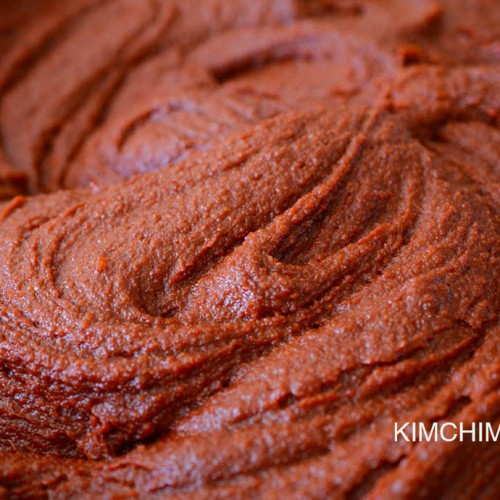
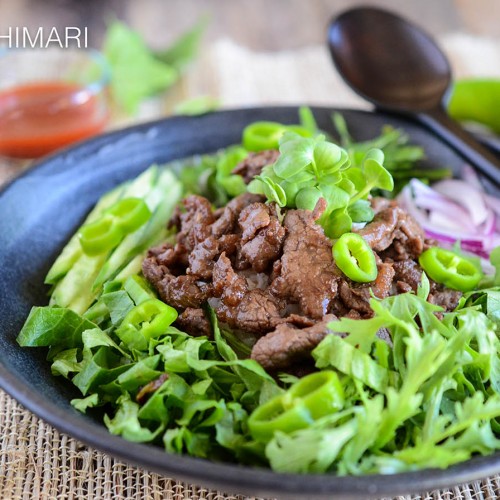
















Hi!! I’m looking to make this soon but I’m wondering if I should use more or less chapssalgaru if I use the store-bought powder form?
Hi Sangmi, sorry ‘store-bought powder form’ of which powder? meju? gochukaru? If you can let me know that then I can try to answer. Thank you!
Oh sorry! I meant the store bought sweet rice powder! 찹쌀가루? I know that you soaked and made your own and I’m wondering if I could just use the premade powder!
Yes, you can use the dry powder. I personally haven’t used it but I know people do that. I think you can add just about the same amount or maybe about 5% more. Good luck and would love to hear how it turned out!
Will keep you posted!!
Sorry I’m late to the comment game, but I am making my own batch of gochujang at the moment in the Pacific Northwest.
It’s been fermenting for about 6 weeks at this point and I’m wondering if it should be stirred while fermenting? Or do you just leave it to sit as-is for the ~6 months it’s fermenting?
Thank you for your guidance!
You can stir every now and then – I probably end up stirring about 3-4 times during 6 months. You can do it more often but it shouldn’t make a whole lot of difference. It’s just good to stir so not just the top dries out. Also good to check how dry it gets. If it starts to show cracks on top, you may want to bring it in and keep it in fridge so it stops drying out. Good luck!
I’ve made homemade kimchi (though not authentic as I cannot get hold of gochugaru yet) but I’ve never thought of making homemade gochujang! I will definitely have to give this a try, I love Korean dishes!
Hi Jasline,
Oh how wonderful to hear that! I really hope you do try making some at home. You can make a smaller batch to start and see how you like it. Good luck and thank you for stopping by!
Of the two recipes you posted – which one do you prefer? That is the one I will try first!
Hi Sara,
So they are different – the traditional slow method is what I would prefer since it does give you tons of deep flavors but if you don’t have time or want to put in a whole day’s work to make it, the other Easy, Almost Instant Gochujang recipe should work fine too. It is still better in taste and quality than store bought ones since there’s no corn syrup. I would love to hear how it turned out! Thank you so much!
For a one-person family, like myself, it is not economical to make homemade gochujang. Although I will admit that the taste is probably far superior to the one I buy at the Korean markets. Thank you for the lovely recipe.